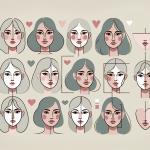Types Of Acne
What are the different types of acne? Acne is a disorder of the pores. This is considered as a skin disease, and is actually the most common skin disease known to hit the Americans. There are many different types of acne. Each of these types of acne are characterized and caused of different particles that our skin encounters. There are four types of acne. These four types are named Grade 1, 2, 3, and 4.
Grade 1 acne are the mildest types of acne. These are minor pimples that normally appear in twos, at the most. In these types of acne, there are blackheads and millia that will grow, as well. Millia is a form of white heads. Although pimples are not that visible in grade 1 acne, the blackheads and the millia may appear in big numbers. These types of acne are the ones that are seen mostly in teenagers. They appear in the nose and the forehead areas of the face. There are also quite a lot of adults who experience grade 1 acne. However, these are very much treatable. There are over the counter products that can help eliminate them. If you are looking to eliminate your grade 1 acne, just get a product that contains salicylic acid. This will greatly aid in taking out the pimples, blackheads, and millia.
The grade 2 types of acne are considered moderate. Much like the grade 1, these also have blackheads and millia that appear in great numbers – although more papules and pustules in these types of acne appear. In laymen’s terms, this is a pimple breakout. There will also be skin inflammation that is obvious to the naked eye. Here, there are acne that will appear in the shoulders and chest area. In males, acne in the back will also be more obvious. Over the counter products can treat these types of acne, too. But aside from the salicylic acid solution, add a benzoyl peroxide lotion to ensure treatment effectiveness.
When you are told that you have grade 3 types of acne that means you have a severe case already. Here, there is more of everything that grades 1 and 2 have. Also, skin inflammation here is more severe as well. Aside from the blackheads, millia, papules, and pustules, there are also nodules that are present here. Grade 3 acne cannot be treated at home. Instead, it is recommended that you consult your dermatologist for a treatment. If not treated, expect your grade 3 acne to develop to grade 4.
Among all the acne types, the most severe is grade 4. This is also known as the cystic acne. Here, you will notice numerable and countless amounts of pustules, papules, nodules, blackheads, millia, and pimples. Plus, you will notice that there might be growing cysts around. The main difference of this type to the three – this type is very painful. Much like the grade 3 acne, this cannot be treated at home. Make sure that you contact your dermatologist as soon as you think you may have this.






